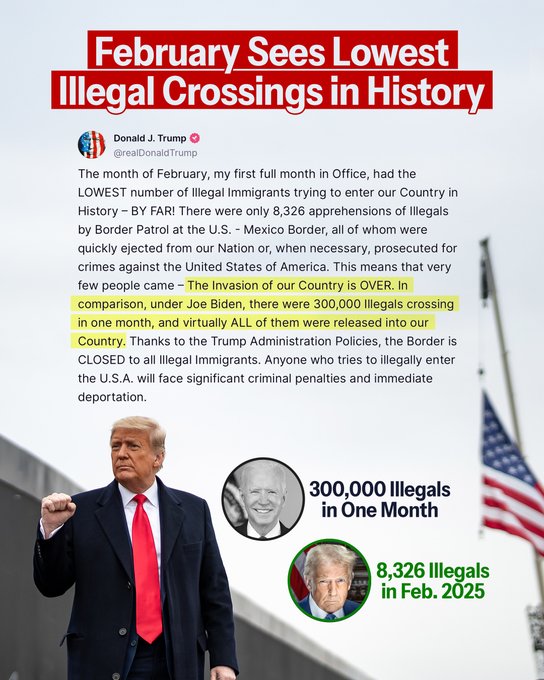illegal immigration
Exclusive Interview: Panama Border Security Chief Says Many U.S.-Bound Terror Suspects Caught in Darien Gap Region

SENAFRONT Director General Jorge Gabea at his headquarters office in Panama City, August 2024. Photo by Todd Bensman.
From the Center for Immigration Studies
By Todd Bensman
The bad news: The migrant flood prompted by Biden-Harris policies means only a tiny fraction can be checked
PANAMA CITY, Panama — In April 2022, the American public finally heard the sound of national security alarms about the U.S. southern border, when U.S. Customs and Border Protection began publishing, on a monthly basis, the numbers of FBI watch-listed terrorists caught illegally crossing (a record-breaking 378 from FY2021 through July 2024).
But what most Americans do not know is that many more terrorism suspects en route to the U.S. border could be added to that alarming number, except these ones were caught in Panama coming out of the notorious Darien Gap jungle, pulled off the migrant trails, and never accounted for in CBP’s public data reports.
New official information about these additional terrorism suspects interrupted on their way to the American border comes by way of an exclusive Center for Immigration Studies interview with the chief of Panama’s National Border Service (SENAFRONT), Director General Jorge Gabea, at agency headquarters just off the Panama Canal.
Asked to comment about SENAFRONT’s reported August arrest of three Afghan terror suspects whose biometrics were taken and checked at a Darien Province immigrant reception station (described in the SENAFRONT tweet below), Gabea responded that the report was “not fake”.
Se detecta a través de acciones de perfilamiento y pruebas biométricas a tres terroristas afganos y a tres colombianos con antecedentes criminales en la Estación Temporal de Recepción Migratoria de Lajas Blancas en Darién.#CentinelasDeLaPatria pic.twitter.com/xvnaMyBjOX
— SENAFRONT PANAMÁ (@senafrontpanama) August 3, 2024
Three Afghan terrorists and three Colombians with criminal records are detected through profiling actions and biometric tests at the Lajas Blancas Temporary Immigration Reception Station in Darién. #CentinelasDeLaPatria
“We did take and profile a few members of a terrorist cell from … Afghanistan,” he said. “We linked and we profiled them to be members of an active cell. They were members of a Salafist group, and they had links with different activities.”
But then Gabea added that this was far from a one-off.
“We have many stories of that. We don’t just have one. We have many stories of that, from Somalia, from Yemen … from Syria, from Africa.”
Gabea would not put a number on the “many stories”.
But for all those good-news stories of short-circuited U.S. border-crossings by known terrorist suspects, he also suggested that the record-breaking flood hundreds of thousands of migrants a year from 150-plus nations that began pouring through the Darien Gap from Colombia in 2021 has severely hampered the very counterterrorism screening programs that catch them and get them off the trails early.
”3 Percent in This Moment” — The Broken Counterterrorism Dam. I knew exactly what Gabea was talking about. Following a previous trip to Panama in 2018, I produced reporting about those counterterrorism programs. This was several years before the historic mass migration event that the Biden-Harris administration would unleash starting in 2021. (See 2019 video below.)
Since 2011, SENAFRONT has worked closely with in-country FBI and DHS agents on counterterrorism programs that use U.S.-provided equipment to collect migrant biometrics like fingerprints and photos and run them through terrorism databases looking for positive hits before the foreign nationals move on north.
But SENAFRONT’s director general indicated that so many began coming through the gap during the historic mass migration to the U.S. border that Central American authorities are scarcely able to screen even a fraction of them.
“Maybe at this moment … we can check like 3 percent and, in the worst moment, 1 percent,” Gabea told me. “We don’t have the capability to screen everybody.”
So many are coming that agents on the ground are left to “profile” immigrants for priority collection and checks, probably meaning if they are young men from Muslim-majority nations. But eyeballing always eludes perfection.
”Throughout the Years, We Were Catching a Lot … Hundreds.” This profound reduction in coverage to 1 percent or 3 percent in Panama stands in contrast with a 90-percent rate of screening immigrants in the country when the program started in 2011, when flows were usually well under 10,000 per year.
This is according to Edward Dolan, a former Homeland Security Investigations agent who worked deeply with these programs while later serving as DHS’s Regional Attache for Central America in the U.S. embassy in Panama City. Dolan retired from service in 2019 but still lives and works in Panama, where I met with him in a coffee shop.
“Throughout the years, we were catching a lot” of watch-listed terrorists, Dolan told me. “From like 2015 to 2019, it was hundreds.”
But checking the 550,000 immigrants that crossed in just 2023 and almost 250,000 so far in 2024?
“That’s insurmountable,” Dolan said. “I can’t imagine trying to manage what they have now.”
Dolan said those low screening rates in Panama help explain the record-high number of terror suspects getting caught and counted illegally crossing the U.S. border.
“All you have to do is look at what’s being reported at the southwest border and then go back and look at the numbers in 2019 [zero] and 2020 [three],” Dolan said. “That tells the story itself.”
Delayed Counterterrorism Responses from Colombia to Texas. So many are coming in through the Darien Gap, Gabea confirmed, that “active terrorist” migrants are sometimes mistakenly freed to proceed to countries north before biometric information submitted in Panama produces a positive hit.
A red flag goes out then, of course, and with a little luck, “they take them from the migrant flow”, Gabea explained, for interviews with American and local agents, the eventual deportation to “their official port of entry. Maybe it’s in Africa. Maybe it’s Bosnia. We return them to their previous position.”
Clearly, however, many are too long gone and don’t get caught until they hit the American border, if ever. On August 5, the U.S. House Judiciary Committee issued an interim report revealing that since January 2021, CPB released into the United States “at least” 99 border-crossing immigrants who were on the FBI’s terrorist watchlist database.
The entire multinational counterterrorism net now stands reduced in capability, and the bad guys know it, Dolan said.
“If you’re a terrorist,” he said. “this is how you’re going to come to the United States.”
The Center for Immigration Studies is an independent, non-partisan, non-profit research organization founded in 1985. It is the nation’s only think tank devoted exclusively to research and policy analysis of the economic, social, demographic, fiscal, and other impacts of immigration on the United States.
illegal immigration
Court attempts to halt Trump deportations, El Salvador president says ‘too late’
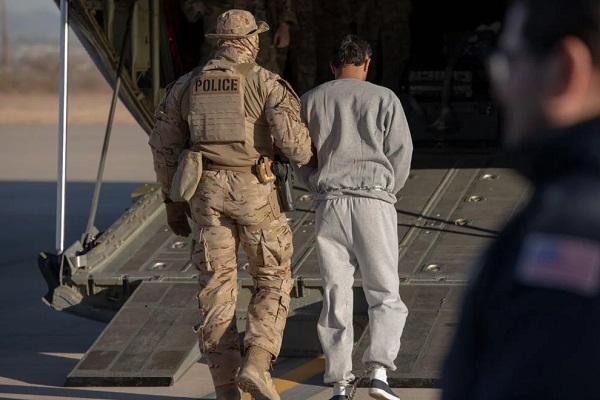
From The Center Square
By
A class action lawsuit was filed on Saturday against the Trump administration after President Donald Trump signed an executive order invoking the Enemy Aliens Act to target, arrest and remove violent Venezuelan prison gang members, Tren de Aragua (TdA), from the U.S.
The lawsuit was filed by the American Civil Liberties Union Foundation on behalf of five Venezuelans illegally in the country who were detained in Texas and New York. The lawsuit was filed in U.S. District Court for the District of Columbia.
On Saturday, nearly 300 violent illegal foreign nationals were removed from the U.S. and arrived in El Salvador with the cooperation of El Salvadoran president Nayib Bukele after reaching an agreement with Secretary of State Marco Rubio.
“The first 238 members of the Venezuelan criminal organization, Tren de Aragua, arrived in our country,” Bukele said in a post on X. “They were immediately transferred to CECOT, the Terrorism Confinement Center, for a period of one year (renewable).”
El Salvador also received 23 MS-13 gang members from the U.S. who were wanted by Salvadoran authorities, Bukele said. They include two ringleaders, one of whom “is a member of the criminal organization’s highest structure.” Those sent to El Salvador by the U.S. will help Bukele’s government “finalize intelligence gathering and go after the last remnants of MS-13, including its former and new members, money, weapons, drugs, hideouts, collaborators and sponsors.
“As always, we continue advancing in the fight against organized crime. But this time, we are also helping our allies, making our prison system self-sustainable, and obtaining vital intelligence to make our country an even safer place. All in a single action. May God bless El Salvador, and may God bless the United States,” he said.
The U.S. government is paying a small fee to detain them, Bukele said, and the prison is also making money because it requires inmates to work. These additional inmates, “combined with the production already being generated by more than 40,000 inmates engaged in various workshops and labor under the Zero Idleness program, will help make our prison system self-sustainable,” he said, noting that it costs $200 million a year to maintain.
In response, Rubio thanked Bukele saying, “El Salvador has agreed to hold the violent criminals “in their very good jails at a fair price that will also save our taxpayer dollars. President Nayib Bukele is not only the strongest security leader in our region, he’s also a great friend of the U.S.”
In an emergency hearing held on Saturday, a federal judge ruled that deportations of violent Venezuelans be temporarily halted and those who were illegally in the country and already removed be returned. The ACLU said the order blocked the administration “from deporting anyone under the Alien Enemies Act while the case proceeds. Flights carrying Venezuelan immigrants the DHS attempted to deport have been ordered to turn around and return to the U.S.”
A U.S. federal judge has no jurisdiction over foreign governments.
In response, Bukele posted on X, “Oopsie … Too late,” with a laughing emoji.
Bukele also posted videos and pictures of them arriving in El Salvador in handcuffs. The video shows them being met by El Salvadoran military wearing riot gear and transported in armored vehicles to CECOT. The videos depict El Salvadoran officials lifting up their shirts to show tattoos of gang member affiliation, officials shaving the heads of kneeling inmates and their admittance as CECOT inmates.
Today, the first 238 members of the Venezuelan criminal organization, Tren de Aragua, arrived in our country. They were immediately transferred to CECOT, the Terrorism Confinement Center, for a period of one year (renewable).
The United States will pay a very low fee for them,… pic.twitter.com/tfsi8cgpD6
— Nayib Bukele (@nayibbukele) March 16, 2025
Cooperation between the U.S. and El Salvador expanded under Trump and Rubio, representing a reversal of Biden administration policy that used taxpayer money and planes to transport illegal foreign nationals into the U.S.
Trump has been aggressively targeting of TdA after a record more than 1 million Venezuelans illegally entered the U.S. under the Biden administration, including TdA members expanding operations in at least 22 states, The Center Square first reported.
Under the Trump administration, Venezuelan repatriation flights also began, paid for by the Venezuelan government, negotiated by the Trump administration, The Center Square reported.
illegal immigration
“The Invasion of our Country is OVER”: Trump reports lowest illegal crossings in history
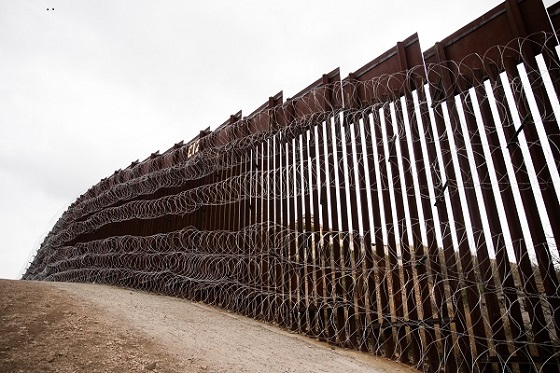
 MxM News
MxM News
Quick Hit:
President Donald Trump announced on Saturday that illegal immigrant apprehensions at the southern border plummeted to just 8,326 in February—marking a historic low. In a Truth Social post, Trump declared, “The Invasion of our Country is OVER,” crediting his administration’s tough enforcement measures for the drastic reduction.
Key Details:
-
The figure represents a staggering 96% drop from December 2023, when illegal crossings under Joe Biden’s administration peaked at 301,981.
-
Trump emphasized that those caught illegally entering the U.S. were “quickly ejected from our Nation or, when necessary, prosecuted for crimes against the United States of America.”
-
Trump credited executive action, including an emergency border declaration, military deployments, the end of birthright citizenship, and a crackdown on sanctuary cities, for the sharp decline in illegal entries.
Diving Deeper:
President Trump’s first full month back in office saw a seismic shift in border security policy, leading to what he called “the lowest number of illegal border crossings in decades.” In a Truth Social post on Saturday, Trump highlighted the stark contrast between his administration and Biden’s, stating:
“This means that very few people came – The Invasion of our Country is OVER. In comparison, under Joe Biden, there were 300,000 Illegals crossing in one month, and virtually ALL of them were released into our Country. Thanks to the Trump Administration Policies, the Border is CLOSED to all Illegal Immigrants.”
Upon taking office, Trump signed multiple executive orders that significantly curtailed illegal immigration. These include reinstating policies that allow expedited removals, deploying U.S. troops to the southern border, resuming construction of the border wall, and ending Biden-era programs that facilitated migrant entry through humanitarian parole. Additionally, the Department of Homeland Security (DHS) reversed previous Biden restrictions on Immigration and Customs Enforcement (ICE), leading to a sharp uptick in interior enforcement.
According to DHS data obtained by Fox News Digital, ICE interior arrests skyrocketed by 137% in just three weeks, with 11,791 arrests recorded from Jan. 20th to Feb. 8th—compared to 4,969 during the same period in 2024. High-profile raids in sanctuary cities have also yielded thousands of arrests, including gang members and violent offenders.
The economic impact of Trump’s border policies is already being felt. Federal funds that had been allocated to house illegal immigrants in hotels, particularly in cities like New York, are being clawed back. A recent executive order directed all federal agencies to identify and cut off taxpayer-funded programs that benefit illegal immigrants.
Despite congressional gridlock preventing any new border legislation, Trump’s administration has relied solely on executive authority to crack down on illegal immigration. His message to potential border crossers remains clear: “Anyone who tries to illegally enter the U.S.A. will face significant criminal penalties and immediate deportation.”
-
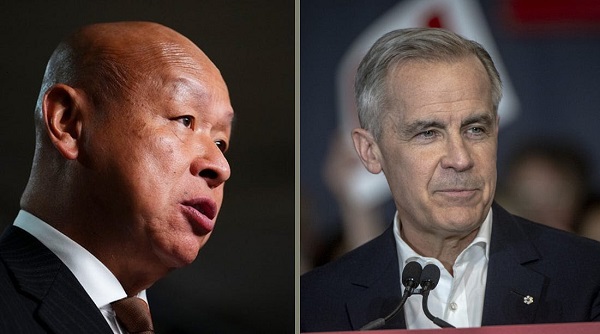
 Uncategorized1 day ago
Uncategorized1 day agoPoilievre on 2025 Election Interference – Carney sill hasn’t fired Liberal MP in Chinese election interference scandal
-
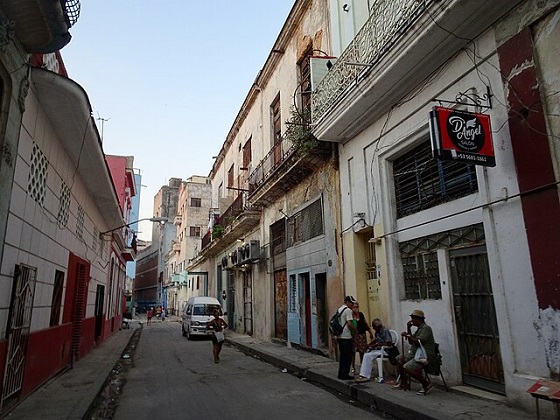
 Business2 days ago
Business2 days agoCuba has lost 24% of it’s population to emigration in the last 4 years
-

 2025 Federal Election1 day ago
2025 Federal Election1 day ago2025 Federal Election Interference from China! Carney Pressed to Remove Liberal MP Over CCP Bounty Remark
-

 2025 Federal Election1 day ago
2025 Federal Election1 day ago2025 Election Interference – CCP Bounty on Conservative Candidate – Carney Says Nothing
-
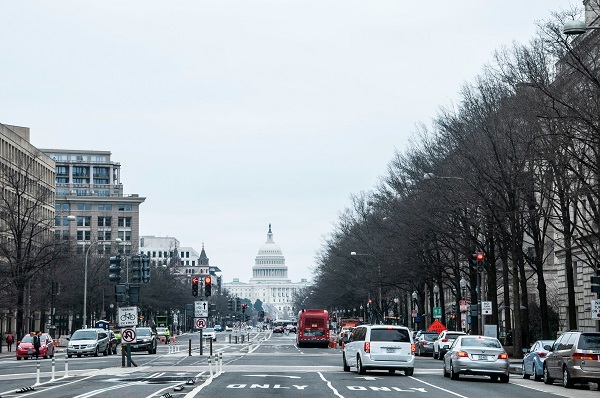
 International2 days ago
International2 days agoTrump signs executive order to make Washington D.C. “safe and beautiful”
-

 Media1 day ago
Media1 day agoTop Five Huge Stories the Media Buried This Week
-
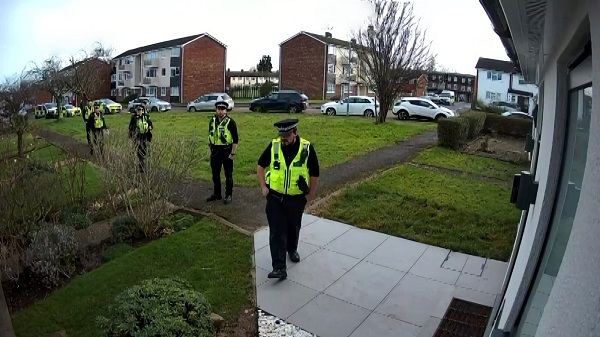
 Censorship Industrial Complex23 hours ago
Censorship Industrial Complex23 hours agoWelcome to Britain, Where Critical WhatsApp Messages Are a Police Matter
-
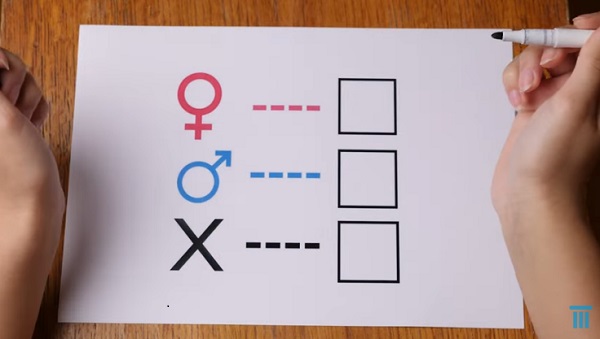
 Aristotle Foundation2 days ago
Aristotle Foundation2 days agoCanada has the world’s MOST relaxed gender policy for minors


